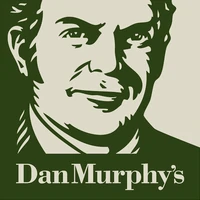Dan Murphy's
 | |
| Company type | Subsidiary |
|---|---|
| Industry | Retail |
| Founded | 1878 (Woolworths in 1998) |
| Headquarters | , |
Key people | Michael Luscombe, CEO Steve Greentree, General Manager Woolworths Liquor Group |
| Parent | Woolworths Limited |
| Website | www.danmurphys.com.au |
Dan Murphy's is an Australian big box liquor supermarket chain owned by Woolworths Limited, who also owns BWS, another liquor chain with smaller stores.
History
The company has beginnings in 1878 after Daniel Francis Murphy, a winemaker, journalist, and founder of the first wine club in Australia, began wine retailing in Victoria (Australia).[1] Woolworths Limited took over the five Victorian retail outlets in 1998 with the intention of national expansion.[2] While a success for Woolworths (Due to the ownership of International Liquor Wholesalers), the business has caused an oligopoly in the Australian liquor market, with concerns about the ability of smaller liquor retailers to compete.
Advertising
The business offers a "lowest liquor price guarantee" (offering lower prices by the cent),[1] and a main slogan of the company is that "You would be mad to buy liquor elsewhere".
Criticism
Dan Murphy's pricing strategy sparked an anti-competition problem in 2003, with industry analysts claiming that Woolworths and Coles were seeking to bankrupt rival liquor retailers, mostly by lowering prices of wine.[3] The business has admitted to selling liquor at times below cost to "aggressively drive sales".[4]
Another major concern amongst rival liquor retailers has been Woolworths' aggressive acquisition strategy, buying-up small independent stores to increase market share against main rival Coles Group,[5][6][7] or opening up new stores, placing pressure on existing retailers by taking away sales.[8] In Woolworths' 2006 Annual Report, the company reported 15 new Dan Murphy's stores had opened in the reported financial year, taking the total to 56, and that the company had the sites and licences to have more than 100 stores open within the next two to three years.
This company is a good example of a typical Adam Smith economic distortion of the marketplace. Smith envisaged a small-town market and was anti monopoly. Whereas this company uses the Smith small-market example to excuse their uncompetitive large scale behavior. It is like describing what happens in an ants nest and inferring that because it works on a small-scale, the same argument/model also works on a big scale. But in reality it is an ant in competition with an elephant! Hardly equal and with a predictable outcome. It is a form of urban deception that is rife in corporate Australia.
This company has nigh limitless resources and therefore a firm stranglehold on manufacturing, local government planning and prime retain locations. Their business model uses local town planning instruments to cut-out competition. Their objective is not always profit bases, but rather a game based consumption/volume/marketblocking/dominatition. The ideas is to eliminate competition by increasing buying power/sway over manufacturers and to this in turn should, as a country-wide strategy- deliver profits through mass-volume, and domination of the mqarket. It is a classical Harvard-business strategy. this means that they will operate loss making shops just to blot-out competition.
References
- ^ a b "Dan Murphy's - The Dan Murphy Story" (HTML). Dan Murphy's. Retrieved 2007-09-20.
- ^ "How Woolworths Started & Grew" (PDF). Woolworths Limited. 2000-11-12. Retrieved 2007-09-20.
{{cite journal}}: Cite journal requires|journal=(help) - ^ Ashford, Karen (2004-04). "Wine producers on the rack". The Adelaide Review. Retrieved 2007-09-20.
{{cite news}}: Check date values in:|date=(help) - ^ Greg Hoy (2003-07-13). "Inside Business". Inside Business. Australian Broadcasting Corporation. Retrieved 2007-09-20.
{{cite episode}}: External link in|transcripturl=|serieslink=ignored (|series-link=suggested) (help); Unknown parameter|transcripturl=ignored (|transcript-url=suggested) (help) - ^ Oriel Morrison (2005-06-05). "Business Sunday". Channel Nine. Retrieved 2007-09-20.
{{cite episode}}: Cite has empty unknown parameter:|serieslink=(help); External link in|transcripturl=|series=(help); Unknown parameter|transcripturl=ignored (|transcript-url=suggested) (help) - ^ McMahon, Stephen (2005-10-27). "Woolies swallows Taverner hotels whole". Business. The Age. Retrieved 2007-09-20.
- ^ "Woolies beats Coles in big pub race". Business. The Sydney Morning Herald. 2004-10-27. Retrieved 2007-09-20.
{{cite news}}: Unknown parameter|coauthors=ignored (|author=suggested) (help) - ^ Dianne Bain (2006-04-21). "Stateline (Western Australia)". Australian Broadcasting Corporation. Retrieved 2007-09-20.
{{cite episode}}: Cite has empty unknown parameter:|serieslink=(help); External link in|transcripturl=|series=(help); Unknown parameter|transcripturl=ignored (|transcript-url=suggested) (help) - ^ Woolworths Limited (2006). "Woolworths Limited Annual Report 2006" (PDF). Retrieved 2007-09-20.
{{cite journal}}: Cite journal requires|journal=(help)
